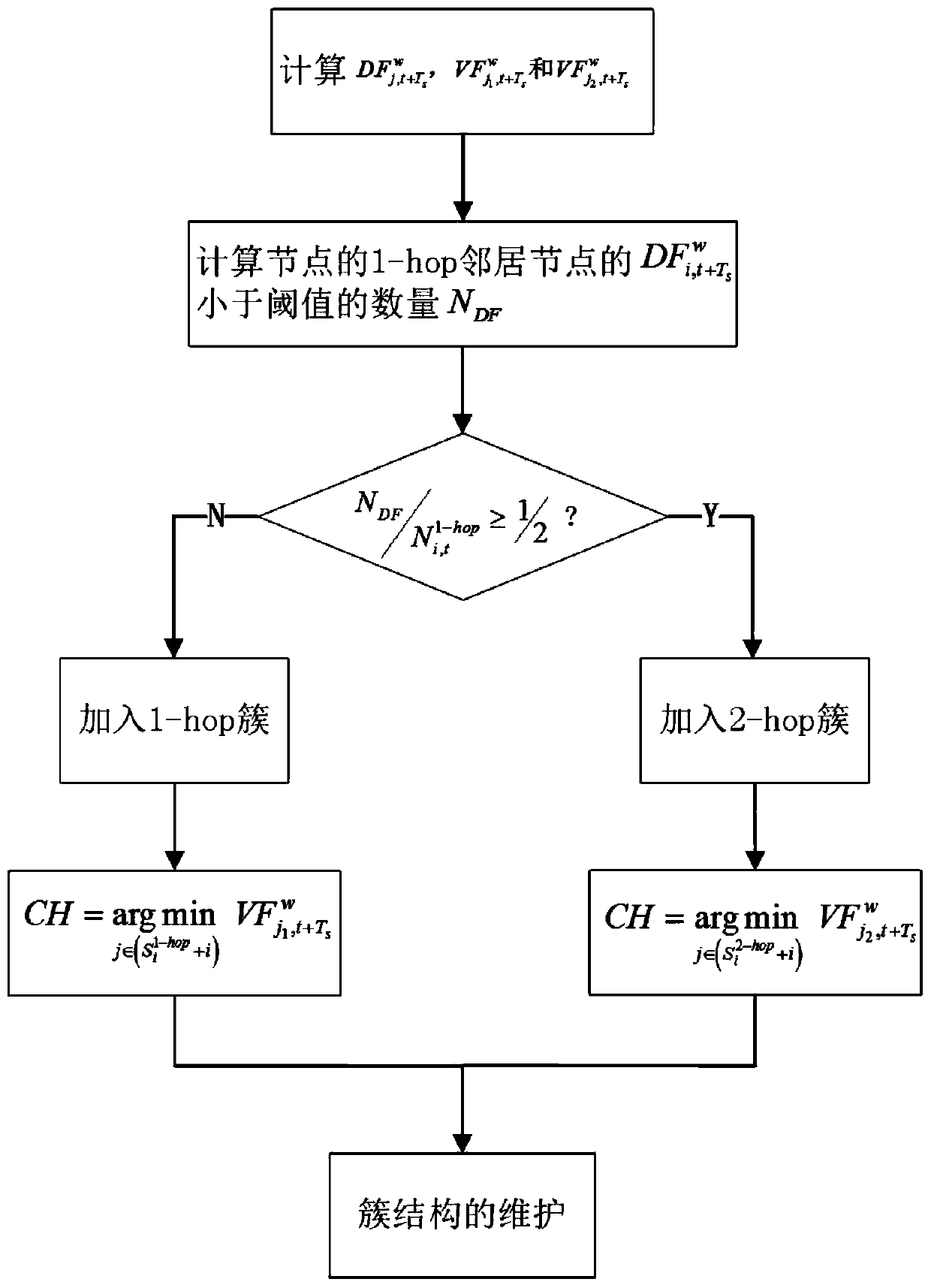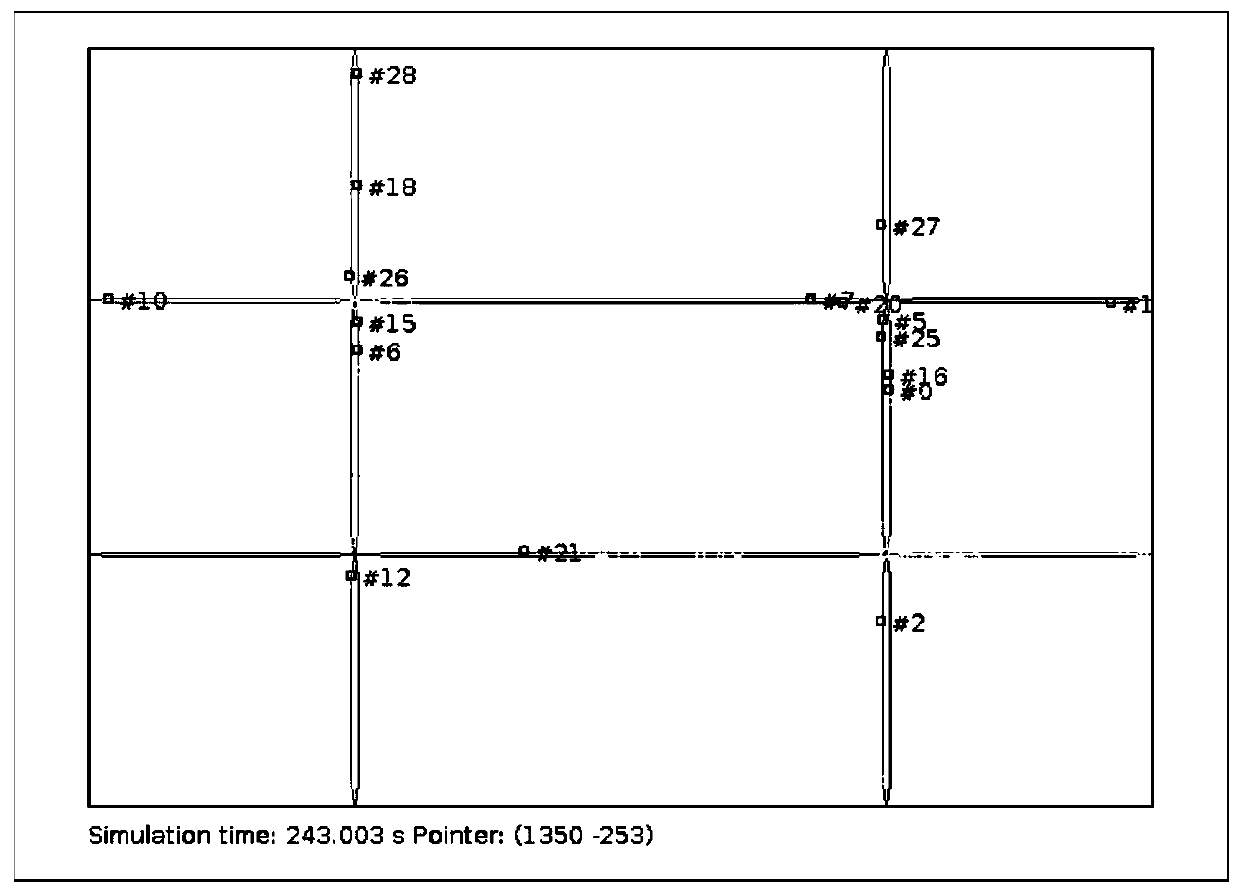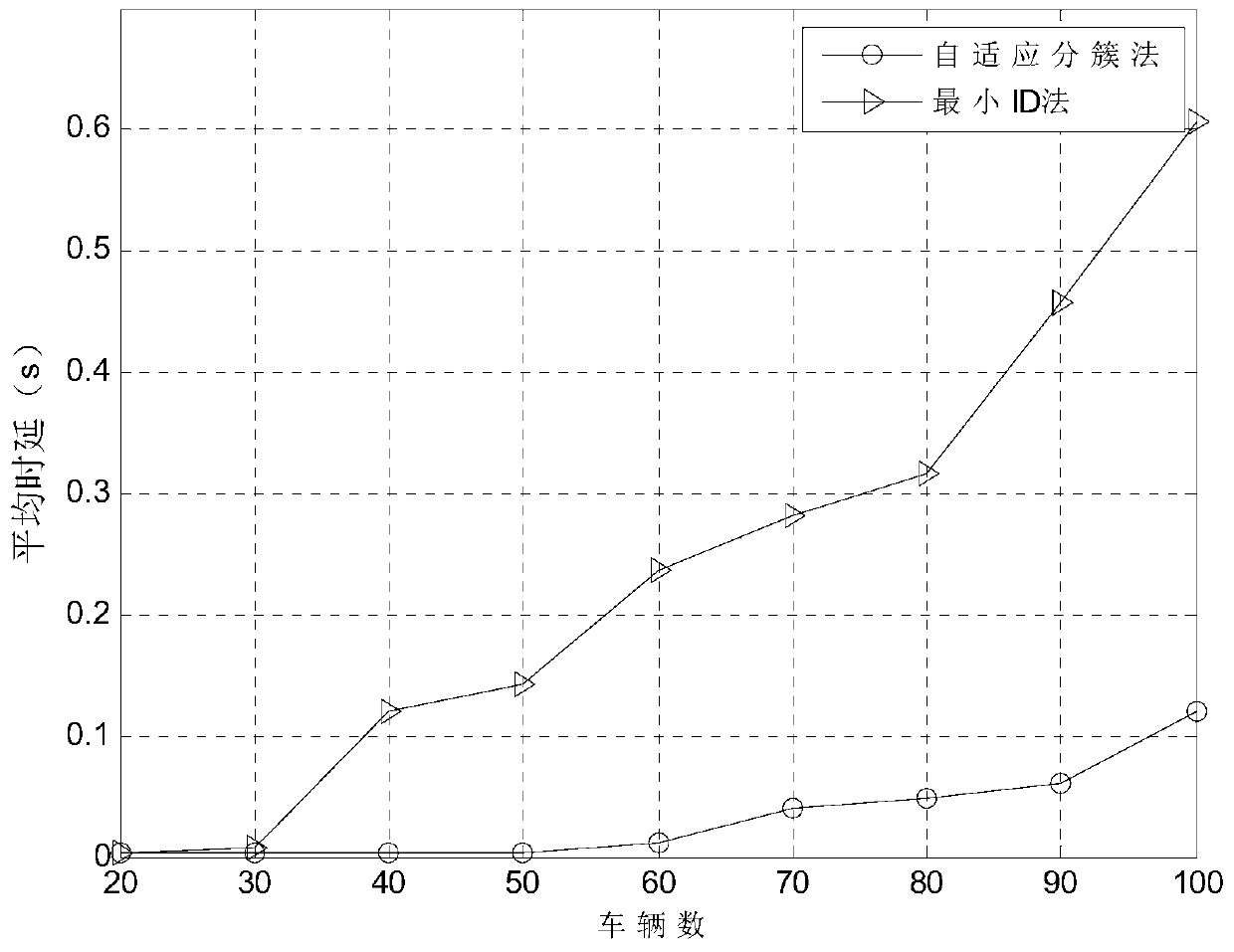Adaptive Clustering Algorithm Based on Density Estimation for Coexistence of 1-hop and 2-hop Clusters in Vanets
A 2-hop, density estimation technology, applied in wireless communication, transmission system, network topology, etc., can solve problems such as single clustering structure
- Summary
- Abstract
- Description
- Claims
- Application Information
AI Technical Summary
Problems solved by technology
Method used
Image
Examples
Embodiment Construction
[0054] Below in conjunction with accompanying drawing and embodiment the present invention is described in further detail:
[0055] Such as figure 1 As shown, in the VANETs provided by the present invention, the adaptive clustering method based on the coexistence of 1-hop and 2-hop clusters of density estimation comprises the following steps:
[0056] By getting the current position of the node (x i,t ,y i,t ), speed v i,t and acceleration a i,t It is estimated that the node is at (t+T s ) time position and speed
[0057]
[0058]
[0059] By judging (t+T s ) Euclidean distance between nodes at time Compared with the node communication radius TR, the node is at (t+T s ) estimated value of the number of 1-hop neighbor nodes at time And then calculate each node in (t+T s ) time DF, 1-hopVF and 2-hopVF are stored in the entry of each node:
[0060]
[0061] In the formula:
[0062]
[0063] is the 1-hop neighbor node set of node i, for Any node j...
PUM
 Login to View More
Login to View More Abstract
Description
Claims
Application Information
 Login to View More
Login to View More - R&D
- Intellectual Property
- Life Sciences
- Materials
- Tech Scout
- Unparalleled Data Quality
- Higher Quality Content
- 60% Fewer Hallucinations
Browse by: Latest US Patents, China's latest patents, Technical Efficacy Thesaurus, Application Domain, Technology Topic, Popular Technical Reports.
© 2025 PatSnap. All rights reserved.Legal|Privacy policy|Modern Slavery Act Transparency Statement|Sitemap|About US| Contact US: help@patsnap.com



